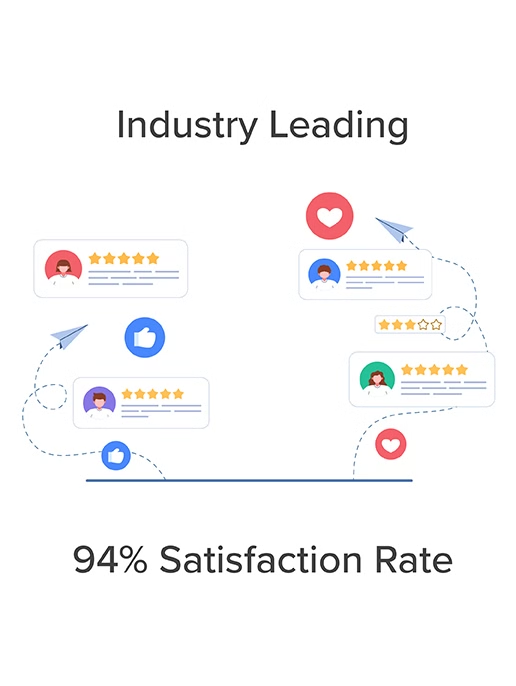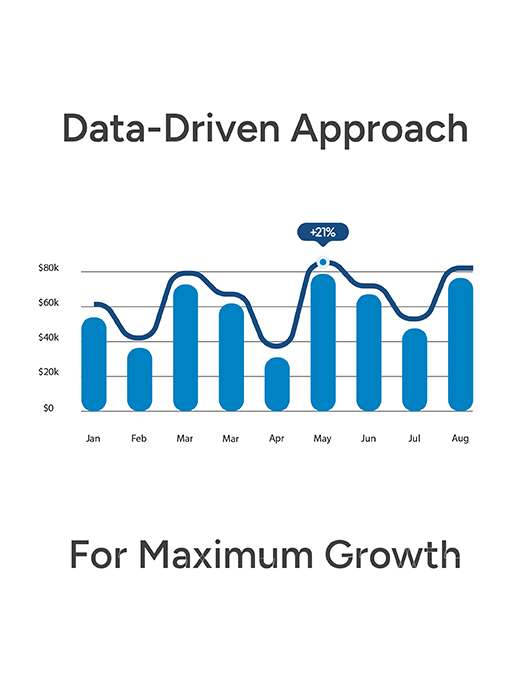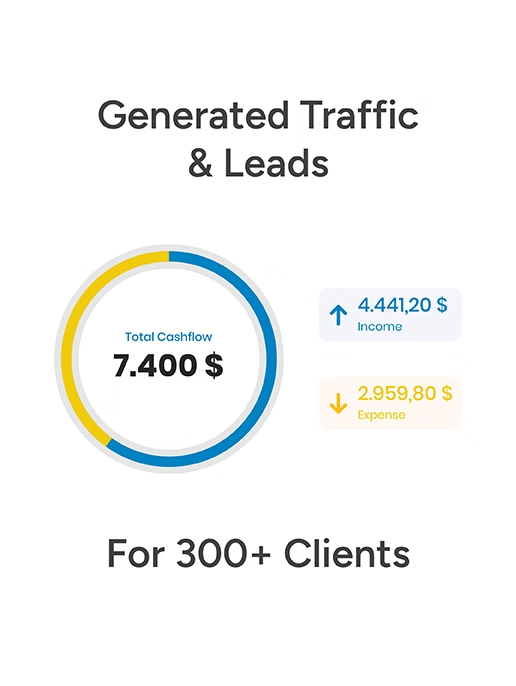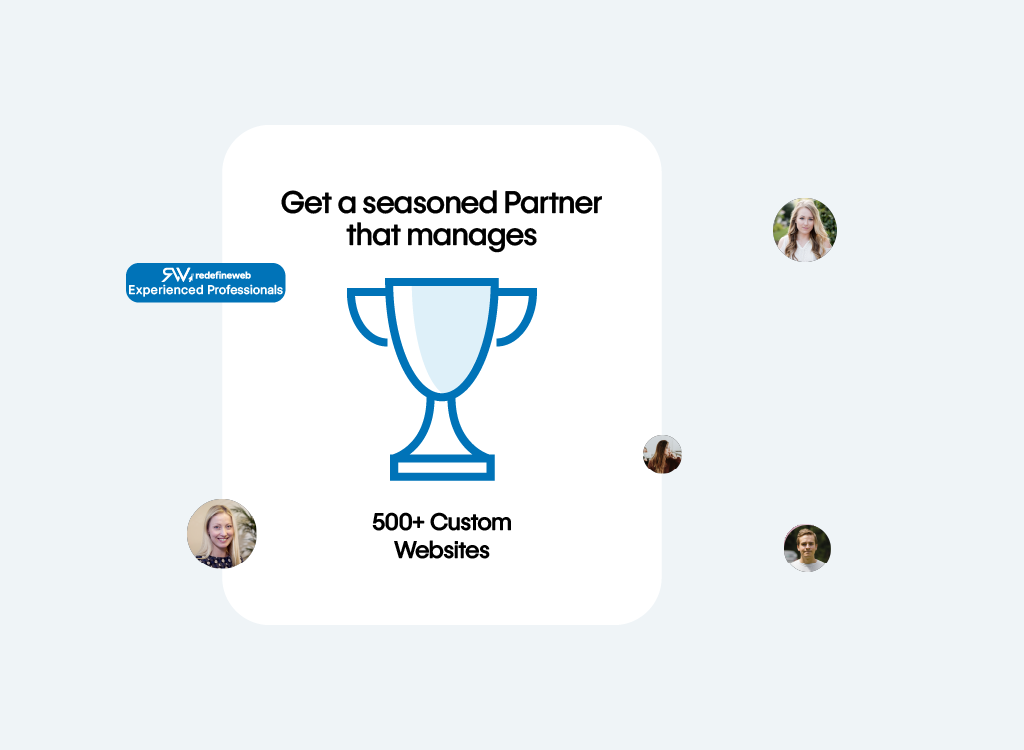


A professional web development agency can charge anywhere from $4,000 to $10,000 to build a website for a medical practice. For many pediatricians, this creates significant budget constraints, which can limit marketing efforts and reduce patient visibility.
Instead, choose one of our pediatrician website packages and start with a free starter website. We’ve designed these plans to address the unique needs of pediatric practices—covering essential elements like design, development, medical SEO, patient-centric content creation, and HIPAA-aware functionality.
With our comprehensive website packages, we handle all the technical details so you can focus on what matters most—providing exceptional care to your young patients and supporting their families.

A professional website is essential for every pediatrician who wants to connect with parents and families. However, even the simplest website builder can take hours to customize and still may not reflect the quality of your care.
At Redefine Web, we provide all-inclusive solutions designed specifically for pediatric practices — covering everything from design and development to local SEO and online marketing.
We work closely with you to understand your practice, your patients, and your goals. This comprehensive approach helps you attract new families, strengthen trust with existing patients, and compete effectively with larger healthcare providers in your area.
Pediatricians often feel frustrated by the lack of tailored, affordable website solutions for medical practices. Many website builders come with hidden fees or limited functionality after the initial contract ends.
Instead of spending hours comparing complex options, work with our skilled pediatric website designers to create a professional, welcoming, and patient-focused online presence that reflects your clinic’s values and expertise.
Every website we build is designed with growth and compliance in mind. Want to add new features—such as online appointment booking, patient forms, or a blog for parents? Just contact us, and we’ll help you deploy it seamlessly.

| Feature | Essential | Growth | Business | Custom |
|---|---|---|---|---|
| Design/Retainer Hours | 5 Hours (One-time) | |||
| Security Patches | ✓ | ✓ | ✓ | ✓ |
| Full-site backup | Monthly | Weekly | Weekly | ✓ |
| Security Scan | Monthly | Weekly | Weekly | ✓ |
| Server Migration | ✓ | ✓ | ✓ | ✓ |
| Copywriting | ✓ | ✓ | ✓ | ✓ |
| Keyword Research | ✓ | ✓ | ✓ | ✓ |
| Blog Posts | ✓ | 1 | 1 | 1 |
| Text Updates | ✓ | ✓ | ✓ | ✓ |
| On-page SEO | ✓ | ✓ | ✓ | ✓ |
| Photos Update | ✓ | ✓ | ✓ | ✓ |
| Off-page SEO |
| Feature | Essential | Growth | Business | Custom |
|---|---|---|---|---|
| Server Side Caching | ✓ | ✓ | ✓ | ✓ |
| HTTP Protocol | ✓ | ✓ | ✓ | ✓ |
| OpCache | ✓ | ✓ | ✓ | ✓ |
| Mod_Expires | ✓ | ✓ | ✓ | ✓ |
| Browser Cache | ✓ | ✓ | ✓ | ✓ |
| Brotli Compression | ✓ | ✓ | ✓ | ✓ |
| CDN | 82 POPs | 82 POPs | 82 POPs | 82 POPs |
| Feature | Essential | Growth | Business | Custom |
| Email Forwarders | ✓ | ✓ | ✓ | ✓ |
| Catch-all Emails | ✓ | ✓ | ✓ | ✓ |
| Email Aliases | ✓ | ✓ | ✓ | ✓ |
| IMAP/POP3/SMTP | ✓ | ✓ | ✓ | ✓ |
| Autoresponders | ✓ | ✓ | ✓ | ✓ |
| Filters | ✓ | ✓ | ✓ | ✓ |
| MX/SPF/DKIM Records | ✓ | ✓ | ✓ | ✓ |
| Email Virus Scanner | ✓ | ✓ | ✓ | ✓ |
| Feature | Essential | Growth | Business | Custom |
|---|---|---|---|---|
| Design/Retainer Hours | 5 Hours (One-time) | |||
| Security Patches | ✓ | ✓ | ✓ | ✓ |
| Full-site backup | Monthly | Weekly | Weekly | ✓ |
| Security Scan | Monthly | Weekly | Weekly | ✓ |
| Server Migration | ✓ | ✓ | ✓ | ✓ |
| Copywriting | ✓ | ✓ | ✓ | ✓ |
| Keyword Research | ✓ | ✓ | ✓ | ✓ |
| Blog Posts | ✓ | 1 | 1 | 1 |
| Text Updates | ✓ | ✓ | ✓ | ✓ |
| On-page SEO | ✓ | ✓ | ✓ | ✓ |
| Photos Update | ✓ | ✓ | ✓ | ✓ |
| Off-page SEO |
We often send out our newsletter with news and great offers. We will never disclose your data to third parties and you can unsubscribe from the newsletter at any time.
Unfortunately, we’re unable to offer free samples. As a retailer, we buy all magazines from their publishers at the regular trade price. However, you could contact the magazine’s publisher directly to ask if they can send you a free copy.
You can create a new account at the end of the order process or on the following page. You can view all of your orders and subscriptions in your customer account. You can also change your addresses and your password.
No, you don’t have to create an account. But there are a few advantages if you create an account.
You never have to enter your billing and shipping address again
Find all of your orders, subscriptions and addresses in your account
Download invoices of your orders
No, we don’t have a physical store location at the moment. We accept only orders through our online shop and we’re shipping all orders with the Swiss Post Service. Please visit our shipping section for more details.
From time to time you will find us at design fairs and popup markets in Switzerland. Subscribe to our newsletter and you’ll receive the latest news.
To ensure fast, reliable performance for every client, we put a soft traffic limit in place that comfortably supports the average pediatric practice. If your site starts attracting more visitors — a great sign that your marketing is working — we’ll help you seamlessly upgrade to a higher-capacity plan with faster speeds and advanced tools, so your growth never slows down.
Each paid plan includes domain-based email addresses (e.g., info@yourpractice.com, billing@yourpractice.com) to make your communication look professional and trustworthy. Dedicated inboxes for inquiries, scheduling, and billing help your team stay organized while maintaining a polished, consistent brand image.
Your package includes dedicated design hours to customize your pediatric website. During this time, our designers tailor your chosen layout to reflect your branding, specialties, and the warm, family-friendly environment of your practice—from adjusting colors and structure to refining visuals. Need more pages or advanced features? You can easily add extra design hours anytime.
Our design team uses these hours to ensure your website looks inviting, consistent with your brand, and easy for parents to navigate. We’ll refine colors, layout, and imagery to create a cohesive, welcoming feel that builds trust and makes scheduling appointments simple. You can always expand your design time as your practice grows or your services evolve.
Yes. If you’d like full ownership of your pediatric website and prefer to manage hosting independently, our buyout option gives you complete control. We’ll provide all design files, assets, and setup instructions to make the transition smooth—allowing your practice to grow on your terms.
Most pediatric websites are completed within 30 days, depending on how quickly we receive your materials—such as your logo, content, and images. More advanced packages, such as those that include appointment forms or marketing integrations, may take a little longer. Before we begin, you’ll receive a clear and realistic delivery timeline.
Yes, you can share your own copy, photos, and team bios if you’d like. However, suppose you’d prefer a done-for-you experience. In that case, our SEO copywriting team can develop clear, parent-friendly content that highlights your expertise and helps your practice rank higher in local searches.
Absolutely. Every pediatric practice has unique goals. Choose from powerful add-ons like Local SEO, Google Ads management, or custom-written service pages for care offerings such as immunizations, wellness visits, or developmental screenings. You can upgrade your package anytime as your practice expands.
We guarantee 99.9% uptime for all hosting plans—so your website is always accessible when parents are searching for a pediatrician. Each plan includes SSL encryption, malware protection, and 24/7 monitoring for worry-free performance and security—at no extra cost.
Heat mapping shows how visitors interact with your website—where they click, scroll, or spend the most time. For pediatricians, this helps identify what catches parents’ attention, such as appointment pages, service lists, or doctor bios. We use this data to fine-tune your site and increase appointment requests.
UX (User Experience) analysis helps us understand how easy and intuitive your site is for parents to use. We review layout, navigation, and page flow to ensure visitors can quickly find what they need—like services, hours, or booking options. Better UX means happier visitors, higher engagement, and more new patients.
Our optimization service ensures your pediatric website loads quickly and runs smoothly. A fast website keeps parents engaged, improves your search rankings, and boosts appointment bookings. We constantly monitor performance and fine-tune elements to maintain peak speed across all devices.
You’ll have a dedicated account manager and access to an online client portal. We send regular progress updates, respond quickly to support requests, and—if you use our marketing services—schedule strategy sessions to review campaign results and identify new growth opportunities.
Our complimentary Google Ads audit for pediatricians reviews your current ad campaigns for efficiency and ROI. Once we have read-only access, our team will:
You’ll receive a clear, actionable report that helps improve your ad performance, reach more families, and make the most of your advertising budget.
WordPress optimization focuses on improving your pediatric website’s performance and speed — things like cleaning up code, compressing images, and enabling caching for faster page loading. A well-optimized site gives parents a seamless experience when exploring your services or booking appointments online.
Maintenance, however, focuses on keeping your site secure and reliable over time. It involves updating plugins and themes, fixing technical issues, and strengthening security to protect your data. In short: optimization improves user experience, while maintenance ensures your site stays healthy, secure, and worry-free.
Our maintenance services keep your pediatric website running fast, secure, and fully functional. We refine your site’s technical details, clean up code, and ensure quick load times across all devices — so parents can easily find your services, fill out forms, or schedule visits. We also monitor for issues, install updates, and maintain consistent performance, giving you peace of mind while you focus on patient care.
Core Web Vitals measure your site’s speed, responsiveness, and stability — all factors Google considers when ranking websites. A strong score helps improve your search visibility, keeps parents engaged longer, and increases appointment requests by creating a smooth, trustworthy browsing experience.
Clear communication ensures your pediatric website turns out exactly how you envisioned it. You’ll have access to our project management portal to track progress, request edits, and communicate directly with your project manager. After your site is live, you’ll use your client dashboard for support requests or marketing updates. If you’ve added PPC management, your account manager will meet with you regularly to review reports and refine your campaigns for the best results.
Your website’s security is our top priority. Every plan includes advanced protection powered by CloudLinux and Imunify360, blocking malware, hacking attempts, and unauthorized access. We run frequent vulnerability scans, secure contact forms, and use QUIC.Cloud’s CDN with enterprise-grade DDoS protection. Our infrastructure is built to safeguard your website, protect client information, and ensure complete reliability every day.
Yes. If you already have a website, we’ll handle the entire migration process for you. Our team transfers your content, images, and database to our optimized hosting environment with minimal downtime. The result? A faster, safer, easier-to-manage website that maintains your existing SEO and improves overall performance.
Absolutely. Every pediatric website package includes secure, automated off-site backups stored in top-tier data centers. In the unlikely event of an issue, we can restore your site quickly—ensuring that your online presence, inquiries, and appointment requests continue without disruption.
We follow a safe, step-by-step update process. All changes are first tested in a staging area to make sure your website and forms work perfectly. Once verified, updates are applied to your live site with no interruptions. Even with our standard plan, your website enjoys proactive monitoring and timely updates to maintain top security and performance.
No. Backup restoration is always included in every pediatric website package. If something unexpected happens—like a plugin conflict or hosting glitch—we can restore your site right away at no extra cost, keeping your site fully functional and online.
We use a multi-layered security approach to protect your site from threats before they happen. Our servers feature firewalls, automated malware scans, and real-time intrusion detection systems. We also use QUIC.Cloud’s CDN with advanced DDoS protection applies every new security patch immediately. The result is a safe, HIPAA-conscious website that gives you—and your patients’ families—complete peace of mind.
Yes! Our SEO and PPC management services help pediatric practices attract more local families and appear at the top of search results when parents look for children’s healthcare nearby. A beautiful website is just the start—visibility is what drives real growth.
Our SEO strategy targets high-value keywords like “pediatrician near me” or “children’s doctor in [your city].” We handle everything—from keyword research and content optimization to link building. For faster results, we often pair SEO with strategic PPC campaigns that instantly place your practice in front of parents searching on Google. Together, these services generate consistent new patient inquiries and help fill your schedule year-round.
We begin by learning about your pediatric practice—your specialties, goals, and ideal families. Using advanced tools like Google Keyword Planner and SEMrush, we identify the most relevant, high-performing keywords such as “child wellness checkups in [city]” or “vaccinations for kids near me.” Then, our writers create parent-friendly, SEO-optimized content that improves rankings, drives qualified traffic, and increases appointment requests.
We begin by learning about your pediatric practice—your specialties, goals, and ideal families. Using advanced tools like Google Keyword Planner and SEMrush, we identify the most relevant, high-performing keywords such as “child wellness checkups in [city]” or “vaccinations for kids near me.” Then, our writers create parent-friendly, SEO-optimized content that improves rankings, drives qualified traffic, and increases appointment requests.
We fine-tune every element of your website to boost search performance and ensure a smooth experience for parents. From page titles and meta descriptions to image tags and internal links, every detail is optimized. We also make sure your site is mobile-friendly and lightning-fast, helping visitors easily find services, book appointments, and learn more about your pediatric care—all while signaling authority to Google.
Our content team creates clear, reassuring copy that helps parents feel confident in choosing your practice. We research your local market and services to craft pages that reflect your expertise in areas like wellness visits, immunizations, and developmental care. Each piece follows SEO best practices to help your website rank higher, attract more parents, and convert visitors into new patients.
Yes. Local SEO is essential for pediatric practices serving families in your community. We optimize your Google Business Profile, manage online listings, and build a strong reputation with authentic reviews. This helps your practice appear in “pediatrician near me” searches—bringing more nearby families straight to your door.
We keep everything transparent and straightforward. You’ll receive regular reports showing keyword rankings, website traffic, form submissions, and appointment requests. For PPC campaigns, we share key insights such as cost per lead, conversion rates, and ROI. Your account manager will walk you through the results and continually adjust campaigns to drive better outcomes.
We offer flexible, results-driven plans designed to fit your practice’s goals and budget. SEO packages can include keyword optimization, content writing, local listings, and technical improvements. PPC pricing is based on your ad spend and campaign scale, with 100% transparency. Every dollar you invest is tracked, measured, and optimized for new patient growth.
Most pediatricians start noticing improvements within 3–6 months, depending on competition, location, and current site performance. SEO delivers steady, compounding results—the longer it runs, the more visibility your practice gains. Over time, you’ll see higher Google rankings, stronger organic traffic, and a growing number of appointment requests from local families.
Our PPC campaigns are customized for pediatric services and your specific goals. We target high-intent search terms like “pediatrician in [city]” or “kids’ checkups near me” to reach families actively seeking care. Our team continuously monitors and refines your ad strategy to ensure maximum ROI and a consistent stream of qualified leads.
We use data-driven targeting to reach your ideal audience—parents in your area searching for children’s healthcare. We also use remarketing ads to stay visible to families who have visited your site but haven’t booked yet. With continuous tracking and optimization, we help lower ad costs while increasing high-quality appointment requests.
Getting started is simple. Choose one of our pediatric website plans and share a few key details about your practice—your logo, services, location, and any preferences you have for design or tone. Once we have your information, our team manages everything from setup to launch, building a professional website that helps families easily find, trust, and contact your practice online. (If you’d like help with content, our SEO copywriting add-on can create parent-friendly, optimized pages for you.)
Absolutely. Every pediatric website includes an intuitive content management system, so you or your staff can easily update service pages, post blogs, add photos, or change text—no technical skills required.
All our plans include secure, high-performance hosting optimized for pediatric practices. If you prefer to host elsewhere, you can transfer your site anytime after a one-time buyout fee. However, most clients stay with us for maximum site speed, full technical support, and top-level security.
Yes! Your staff can log in to add team bios, helpful resources, or educational blog posts anytime. It’s quick and simple to manage. Prefer to hand it off? Our content creation add-on can handle all updates for you, ensuring your website stays current and relevant without adding more to your team’s plate.
Our hosting is built to grow with your practice. The base plan supports about 10,000 monthly visits—ideal for most pediatric offices. As your traffic increases, we’ll provide a seamless upgrade path to maintain fast load times, rock-solid security, and dependable performance as your patient base expands.
Yes. Every pediatric website we design is built with SEO best practices in mind. We focus on fast load speeds, mobile responsiveness, and an optimized site structure to help you rank higher in local searches. For stronger visibility and more new patient leads, our SEO add-on can target your most important services and local keywords.
A design hour refers to the dedicated time our team spends personalizing your pediatric website. During these hours, we adjust colors, layout, and visuals to match your branding and create a professional, family-friendly design. Each standard plan includes four design hours—enough to build a polished, cohesive site. Need more custom work? Extra hours can easily be added.
You can provide your own images and content, or you can choose our Copywriting add-on. With this service, our writers create engaging, SEO-ready, parent-focused content for all your website pages—making sure your messaging is professional, accurate, and aligned with your practice’s voice and values.
Yes. Every pediatric practice has unique needs and goals. Whether you’re looking for additional pages, custom forms, or appointment-booking integrations, we’ll create a tailored quote that fits your timeline, budget, and vision. Your website will be purpose-built to attract families and grow your practice.
Our managed hosting eliminates all the technical headaches of running your pediatric website so you can focus on caring for your patients. You’ll get access to over 500 ready-to-build templates, including layouts designed specifically for pediatric professionals.
Each plan includes four design hours to personalize your site with your logo, colors, and content—so you can launch quickly and with confidence. Every package comes with five professional email addresses, secure backups, and 24/7 monitoring. We handle speed, updates, and security to give your practice a reliable, worry-free online presence.
As your patient base expands, our hosting grows with you. If your website traffic surpasses 10,000 visits per month, we’ll smoothly upgrade your plan with zero downtime. You can also add services like pediatric copywriting, SEO blog content, or marketing materials to help your visibility grow along with your practice. Whether you’re managing one clinic or multiple locations, your website will always run fast, secure, and efficiently.
We take pediatric website security seriously. Our hosting platform uses advanced firewalls, intrusion detection systems, and automatic updates that meet healthcare-grade protection standards. With daily off-site backups and real-time server monitoring, your site stays secure, compliant, and recoverable—protecting both your practice and the families who trust you.
Yes. We’ll transfer your existing pediatric website to our platform with minimal downtime and zero data loss. Our team ensures all your pages, content, and SEO settings move seamlessly—while improving speed, security, and stability.
If your website traffic exceeds 10,000 monthly visits, we’ll get in touch to recommend the next hosting level—ensuring your site maintains top speed and uptime. Occasional visitor surges won’t trigger fees. Our hosting adapts to your site’s growth, keeping your success uninterrupted.
Our data centers are located in North America and Europe. We’ll host your pediatric website on the server nearest your practice, guaranteeing fast loading times and a smooth experience for parents visiting your site.
Absolutely. Every practice has different needs. Whether you need more storage, enhanced security, or faster load speeds, we’ll customize your hosting plan to fit perfectly. As your clinic grows, your hosting plan can expand with you—keeping your online presence fast, secure, and dependable.
Yes. If you already have a website design you’re happy with, we can host it for you. You’ll benefit from our high-speed servers, daily backups, proactive monitoring, and dedicated technical support—perfect for pediatricians who want dependable hosting without additional design services.
Monthly subscribers can export content after one year, while annual plan holders may export anytime. If you ever decide to switch providers, our team coordinates the transition carefully to prevent downtime and ensure your website remains fully accessible during the move.
Buyout fees depend on the amount of customization and development work completed for your website. We’ll always provide a transparent quote with no surprises. Our goal is to give your practice full flexibility and peace of mind—on your own terms.
